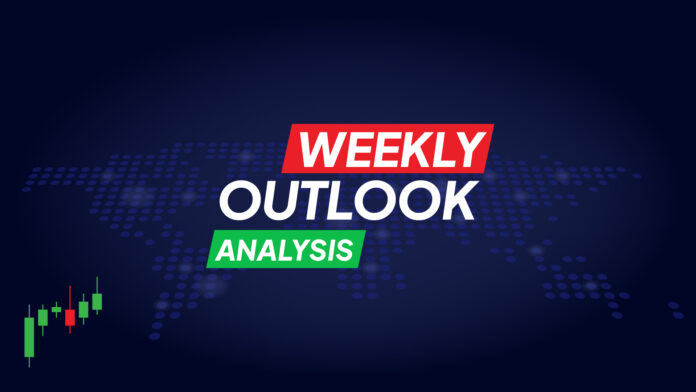Key points to watch out for:
- U.S. inflation and retail sales in focus as dollar loses ground
- UK employment and GDP amid recession doubts
- Can markets withstand calm ahead of central bank meetings?
US CPI: A Potential Challenge
The US Federal Reserve (Fed) is not due to meet until the 20th of this month to make a decision on the country’s monetary policy, and after last week’s jobs report, all eyes are now on the CPI figures due for release on Tuesday, March 12. In recent months there have been both positive and negative reports regarding inflation on U.S. soil. The headline CPI numbers have held above 3.0% while core CPI has been close to 4.0%. However, core CPI inflation has fared better, falling around 2.8% year-over-year in the first month of 2024.
According to market analysts’ estimates, the February readings of the consumer price index will most likely be mixed data. The year-on-year CPI rate would hold steady at 3.1% after a small uptick in the month-on-month rate to 0.4%. Not to be forgotten, the underlying index, which does not take into account food and energy prices, may be a relief. This index is estimated to have fallen from 3.9% to 3.7%.
The services component of the CPI, which does not take into account lodging expenses, will also be the focus of attention, as it increased by nearly 3.6% in January, which is a setback for the Fed, which had expected this figure to be lower. The producer price index on Thursday, March 13 will be critical ahead of the meeting in the middle of this month.
A possible rebound in retail sales is expected
Fed Chairman Jerome Powell remained cautious about the inflation outlook when testifying in front of lawmakers on Capitol Hill last week. Despite signaling that interest rates will likely only be cut through the end of the year, his reluctance to be less inaccurate about the possible timing estimates that the Fed has some reservations about the speed with which inflation is falling.
However, this did not stop investors from feeling good about the prospect of an early rate cut. The U.S. economy is now believed to be slowing enough to prompt the Fed to ease monetary policy, although it can still avoid a tightening, which still points to a risk penalty in the markets.
During January, growth suffered a small slowdown, so it is vital that some sort of rebound is generated in the month of February to sustain the current backdrop. And the latest retail sales figures are expected to do so on Thursday, March 14. After falling to 0.8% month-on-month in the first month of the year, these are expected to rebound by 0.3% during the second month of the year.
U.S. dollar bullish investors expect a positive CPI figure
Other indicators to be released this week include the Empire State manufacturing index, industrial sector production, and the University of Michigan’s flash estimate of consumer sentiment for March, which will be released on Friday, March 15.
For the U.S. dollar, the biggest risk is upside surprises in the CPI data, which could raise doubts about the expected rate hike in June. Positive CPI data would be detrimental to riskier assets, though beneficial for the dollar, which is in dire need of a boost after suffering several setbacks since mid-February. In addition to this data, a series of bond auctions by the Treasury Department could also drive volatility in markets that rely on fixed income, equities and ultimately currencies.
There will be a possible rebound in UK GDP
This week, sterling will also be in the market spotlight as labor market numbers along with the monthly GDP reading are scheduled for this week. Employment in Britain fell last summer as a result of a contraction in the economy, although the economy has been rebounding since October, with the rate coming back to numbers at 3.8%. The report will be released this Tuesday, March 13, and may ease concerns about a possible recession if it comes out with positive numbers.
However, the impact of these figures might be moderated due to previously identified reliability issues with the surveys. It is likely that the Bank of England will start cutting rates after there are clear signs that wage pressures are easing, even though the country has made progress in recent times.
The inflexibility of wage growth would be a major problem for UK monetary policymakers to consider lowering rates, even if the economy faces difficulties. The UK economy is in a technical recession after GDP declined for two quarters in a row in the second half of last year. Production data for January will be released on March 13 and is expected to show GDP growth of around 0.2%, which could bring an end to the recession. In addition, data related to industrial and manufacturing production will be released.
The pound sterling, which has benefited from the dollar’s retreat in recent days, could extend its recent gains if the data beats market expectations.
Elsewhere, it appears to be quiet
As far as the rest of the market is concerned, it looks like it will be a week with no major news impacting the financial market. All this, ahead of vital decisions from central banks such as the Bank of Japan, Bank of England and the Federal Reserve, decisions that will be known until the end of the month.
Market analysts speculate that the Bank of Japan might increase interest rates, March 11, could strengthen the yen’s positions against the dollar, which has risen 2% in the previous week.



